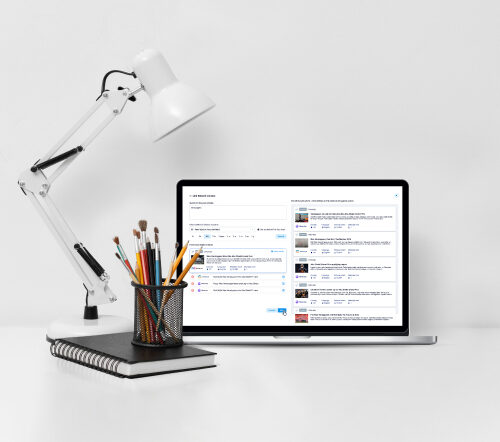The term “crisis” often brings to mind images of catastrophic natural disasters wreaking havoc across regions. However, in a business context, crises can also stem from existential threats, artificial disasters, and various internal or external disruptions. This complex landscape highlights the need for robust crisis management strategies, including media monitoring, to effectively navigate and mitigate crises.
A striking revelation from the PwC Global Crisis & Resilience Survey 2023 is that nine out of ten (91%) organizations reported experiencing at least one significant disruption other than the COVID-19 pandemic in the past two years, with an average of three-and-a-half disruptions.
Furthermore, three-quarters (76%) of these organizations indicated that their most serious disruption had a medium-to-high impact on operations, disrupting critical business processes and services. This caused downstream financial and reputational issues.
This stark reality highlights the critical importance of having a robust Crisis Management Plan (CMP).
An effective CMP, enhanced by strategic media monitoring, is indispensable for businesses to detect emerging threats, manage unfolding crises, and recover with minimal damage.
Media monitoring empowers companies to navigate unexpected turmoil by offering real-time data, which is vital for strategizing responses and understanding the lifecycle of a crisis. It also helps in gathering the necessary resources to ensure stability and continuity.
Let’s explore further what constitutes a business crisis and how media monitoring can significantly enhance crisis management efforts.
Table of contents
- Understanding a business crisis
- The Stages of Crisis Management
- Types of Business Crises
- Media Monitoring: A Strategic Tool for Managing Different Types of Crises
- Setting Up Media Monitoring for Crisis Preparedness
- Enhancing Crisis Management Through Effective Media Monitoring Practices
- Integrating Media Monitoring with Existing Crisis Management Frameworks
- Real-World Applications of Media Monitoring in Crisis Management
- Conclusion: Enhancing Crisis Management Through Strategic Media Monitoring
Understanding a business crisis
A business crisis is any event that threatens a company’s stability and success. Such crises can damage a company’s reputation, disrupt its operations, strain financial resources, or endanger its employees. These crises may originate from internal issues within the company or arise from external forces beyond its control.
Knowing the severe impact a business crisis can have, companies must have a Crisis Management Plan. This plan, created in collaboration with your team, ensures that your company is well-prepared to handle and mitigate the effects of a crisis effectively before it occurs.
This proactive approach will help you manage the crisis when it strikes and recover from it swiftly, preserving the company’s integrity and operational continuity.

The Stages of Crisis Management
Effective crisis management involves multiple stages, each benefiting from strategic media monitoring:
1. Pre-Crisis: Preparation and Prevention
The foundation of effective crisis management lies in preparation. This stage involves developing a comprehensive crisis management plan, setting up sophisticated media monitoring to anticipate potential crises, training teams and creating communication templates.
2. Crisis Management and Response: Action and Communication
Once a crisis unfolds, immediately implementing your crisis management plan is critical. This phase involves activating your crisis communication strategy, contacting employees and stakeholders, and ensuring public and company safety are elevated priorities. Real-time data provided by media monitoring is invaluable here. It informs the immediate implementation of crisis management strategies, ensuring that responses are swift, accurate, and tailored to the situation.
3. Post-Crisis: Recovery and Learning
After the crisis subsides, the focus shifts to recovery and reflection. Maintain open lines of communication with all stakeholders, addressing their concerns and providing updates as the situation stabilizes. Media monitoring helps assess the effectiveness of the response and the impact on public perception. This stage is critical for refining future strategies and enhancing the resilience of the business through continuous learning.
Types of Business Crises
As you identify potential crises that could impact your business, media monitoring serves as a pivotal tool in understanding and preparing for each category:
- Financial Crises: This crisis occurs when a company’s assets significantly lose value, leaving it unable to cover its debts. The result can be a dramatic decrease in demand for the company’s products or services. This decrease can be triggered by economic downturns, poor management decisions, or sudden changes in market conditions. The consequences can range from layoffs and cost-cutting measures to bankruptcy, profoundly affecting long-term sustainability.
- Personnel Crises: Personnel crises arise when an employee or someone associated with the company engages in unethical or illegal behaviour. This includes actions like fraud, harassment, or corruption that compromise the company’s integrity and public trust. The repercussions of such crises can damage a company’s reputation, disrupt internal morale, and necessitate comprehensive internal policies and regular training to mitigate future risks.
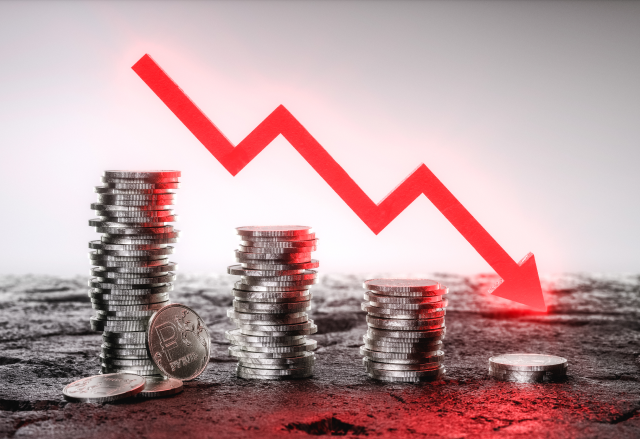
- Organizational Crises: Organizational crises occur when a company significantly harms its stakeholders by exploiting customers for profit or mistreating employees. These crises often stem from systemic issues within the company culture or business practices prioritizing company gains over stakeholder welfare. Such situations can lead to public backlash, legal challenges, and a significant loss of consumer trust.
- Technological Crises: Involve the failure of critical technology, disrupting operations and leading to significant financial losses and reputational damage. Common causes include software bugs, hardware failures, or cybersecurity breaches. Companies reliant on technology need robust plans to address failures quickly, minimizing downtime and mitigating service impacts.
- Natural Crises: Environmental events such as hurricanes, earthquakes, floods, or pandemics can affect a company’s operations, supply chains, or employee safety. These crises can lead to operational shutdowns, increased costs, and substantial recovery periods, severely impacting business continuity. They require effective disaster preparedness strategies to reduce potential damage.
Media Monitoring: A Strategic Tool for Managing Different Types of Crises
Understanding the critical role of media monitoring across various crises can significantly enhance your crisis management capabilities. Here’s how media monitoring applies to each type of crisis mentioned:
Financial Crisis:
Stay informed and up-to-date with market trends, industry news, and economic indicators that could hint at a potential financial downturn affecting your sector. This proactive monitoring anticipates drops in demand or other financial threats before they fully impact your business.
Leveraging insights from media monitoring to craft precise communications can help manage stakeholder expectations and maintain investor confidence during financial instabilities.
Personnel Crisis:
Media monitoring can detect the initial mentions of unethical behaviour associated with your company or employees in the media. This allows for swift internal investigations and appropriate responses before these issues gain significant public attention.
Monitoring media sentiments helps gauge public perception and guide the communication strategy to mitigate reputation damage effectively.
Organizational Crisis:
Monitoring social media and news outlets helps identify customer grievances that could escalate into a crisis. This insight enables companies to address issues promptly, potentially preventing a full-blown organizational crisis.
Understanding customer concerns and media narratives allows for tailored communications that address the root of the problem, helping to restore trust.
Technological Crisis:
Media monitoring tools can instantly alert you to discussions and reports of technological failures, enabling quicker response and mitigation efforts to minimize operational disruptions and client impact.
Continuous monitoring helps manage the narrative around the crisis, ensuring your messaging is accurate and positive to offset negative publicity.
Natural Crisis:
Alerts from news and meteorological reports can provide early warnings about upcoming natural disasters, allowing for more effective preparation and response strategies.
Media monitoring post-crisis can assess the effectiveness of your communication and aid efforts, helping to shape future strategies for dealing with similar events.
By integrating media monitoring into your crisis management plan, your company stays ahead of crises and responds with agility and informed confidence. This strategic approach ensures data-driven, timely, and contextually appropriate responses, safeguarding your company’s reputation and stability in various crises.
Setting Up Media Monitoring for Crisis Preparedness
Step 1: Monitor for Unexpected Developments
Continuously scan for signs of emerging crises by updating and refining alert systems to capture the most relevant data.
This proactive monitoring enables you to stay ahead, ensuring that you identify any unusual activity or emerging crisis early, which helps safeguard and enhance your brand’s reputation.
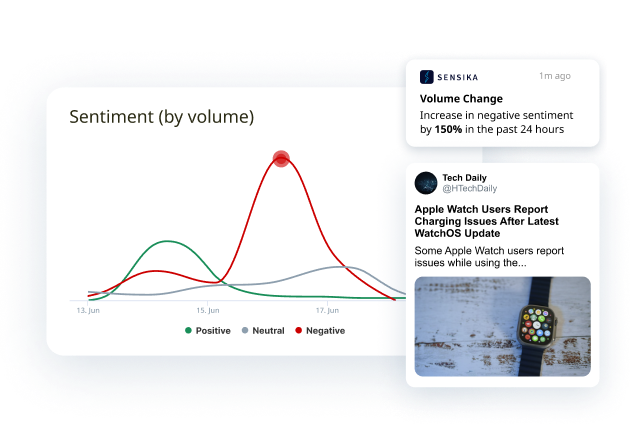
Step 2: Analyze Public Sentiment
Regularly analyze how the public perceives your brand, particularly during sensitive times, to tailor your communications effectively.
Set up specialized feeds to monitor public reactions and sentiments towards your brand.
Understanding the tone and emotional responses of the public is invaluable for crafting targeted communications that effectively address concerns, alleviate worries, and reinforce positive perceptions of your brand.
Step 3: Track Emerging Trends
Keep a close eye on emerging trends in media coverage and public discourse related to your brand or industry.
Monitor key topics, popular narratives, and trending hashtags to adjust and direct your communication efforts.
Ensuring your messaging is relevant and timely will enhance its effectiveness and resonance with your audience.
Step 4: Monitor Engagement
Evaluate how your audience interacts with your communications. Analyze metrics such as the volume of posts, likes, shares, and the reach of influencers who discuss your brand.
Understanding what resonates with your audience—or what falls flat—helps you refine your messaging and choose the most effective channels and strategies for engagement.
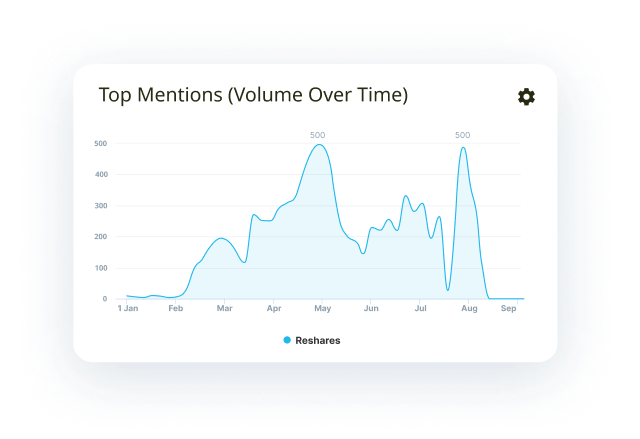
Leverage influential voices and popular content to amplify your message and improve the impact of your communications.
This setup ensures that your crisis management efforts are informed, timely, and effectively aligned with your strategic goals and public expectations.
Enhancing Crisis Management Through Effective Media Monitoring Practices
To further maximize the effectiveness of your media monitoring efforts in crisis management, focus on comprehensive training, strategic use of gathered data, and maintain continuous improvement. These components ensure that your team is well-prepared to use media monitoring tools during crises and is adept at responding dynamically to the insights these tools provide.
With these practices integrated into your crisis management strategy, your organization can significantly enhance its resilience and responsiveness to potential threats.
Training Teams on Media Monitoring Use
Knowing how to use the tools is not enough. You must also interpret the data accurately.
Training should help team members distinguish between mere noise and actionable insights. Incorporate scenario-based training modules that simulate various crises, allowing teams to practice using real-time media monitoring tools.
This hands-on experience prepares them to react swiftly and effectively when crises occur.
Utilizing Actionable Insights from Media Monitoring
Insights derived from media monitoring can guide crucial decisions and strategies, potentially averting crises.
Teams should learn how to seamlessly integrate these insights into existing crisis management plans, ensuring that plans are dynamic and responsive to real-time information.
For example, a detected spike in negative sentiment can trigger predefined response strategies, which are continually refined based on new data.
Emphasizing Continuous Improvement and Feedback
Continuous improvement is vital for maintaining effective crisis management protocols.
Regularly review and update your media monitoring setup to adapt to new threats and changes in the business environment. Implement feedback mechanisms that allow stakeholders to contribute to refining the crisis management and media monitoring processes after a crisis.
This feedback loop is crucial for adapting and enhancing strategies, ensuring the organization remains agile and prepared for future challenges.
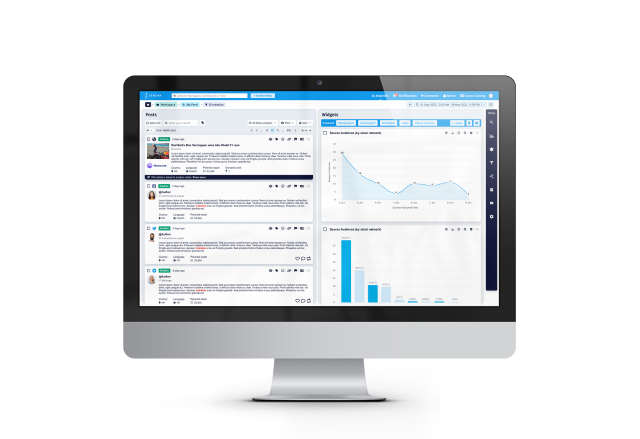
Integrating Media Monitoring with Existing Crisis Management Frameworks
Effective integration of media monitoring into your crisis management strategy involves several key components:
Strategic Alignment: Set unified goals for crisis preparedness and response, ensuring every department understands how media monitoring insights contribute to broader crisis management objectives.
Operational Integration: Set up systems to ensure your team acts upon insights and alerts. For example, designate specific roles and responsibilities for crisis response based on the received data and establish protocols for escalating issues to decision-makers quickly.
Technology Integration: Link your media monitoring software with communication platforms to disseminate information swiftly or with data analytics tools. Such integration creates a more agile and responsive crisis management system that leverages technology to anticipate and react to potential threats.
By addressing these integration aspects, your organization can harness the full potential of media monitoring, making your crisis management efforts more proactive, informed, and synchronized across all departments.
Real-World Applications of Media Monitoring in Crisis Management
To demonstrate the critical role of media monitoring in crisis management, we examined several real-world scenarios where businesses faced significant challenges. These case studies illustrate how effective implementation of media monitoring tools can aid in detecting, managing, and recovering from crises, thereby safeguarding company interests and enhancing resilience.

Boeing 737 Max Crisis
In 2018 and 2019, Boeing faced a grave crisis when two of its 737 Max aeroplanes crashed in Indonesia and Ethiopia, resulting in the deaths of 346 people. Initially, Boeing attributed the crashes to pilot error but later discovered that a flight control software issue was to blame. This revelation led to a global grounding of all 737 Max planes for 20 months, severely impacting Boeing’s stock price and financial stability.
Media Monitoring’s Potential Role:
Had Boeing implemented effective media monitoring, they might have identified early warnings about the flight control software from pilot forums, expert discussions, and aviation blogs. Proactive information management could have allowed Boeing to address the issue before it led to catastrophe.
Response and Fallout:
Public and regulatory pushback met Boeing’s initial deflection of blame. Comprehensive media monitoring during this phase could have guided Boeing to formulate a more transparent and empathetic response, potentially softening the reputational blow. Continual monitoring was crucial for assessing public sentiment and tailoring communications during recovery.
Lessons Learned:
The Boeing case underscores the importance of transparency and proactive media monitoring throughout a crisis. Effective monitoring could have provided real-time insights into emerging narratives, possibly preventing further losses and facilitating a more managed crisis response.
Amazon Warehouse Collapse During a Tornado
In December 2021, Amazon faced criticism after a tornado caused one of its Illinois warehouses to collapse, killing six people. The crisis deepened with reports that employees were forced to work despite tornado warnings.
Media Monitoring and Crisis Communication:
Amazon’s delayed response seemed insincere, especially as the CEO was active on social media discussing unrelated topics. Real-time media monitoring could have alerted Amazon to the rapidly escalating concerns, emphasizing the need for a swift and empathetic response. Monitoring discussions and media reports could have provided Amazon with essential insights to address the crisis more effectively.
Lessons Learned:
This incident highlights the critical need for immediate and genuine communication following a crisis. A robust crisis response strategy, supported by diligent media monitoring, could facilitate quicker engagement with the public, demonstrating empathy and a commitment to corrective actions.
Burger King’s Impossible Burger Lawsuit
In 2019, Burger King faced a lawsuit alleging misleading advertising about its Impossible Burger, which was cooked on the same grills as meat products, thus not entirely free from animal products.
Crisis Communication Strategy:
Burger King took a measured approach, allowing legal processes to unfold without excessive public intervention. This restrained communication strategy prevented the issue from overshadowing the brand’s image and focused attention on its product offerings instead.
Outcome and Lessons Learned:
The lawsuit was dismissed a year later due to insufficient evidence. Burger King’s response to the dismissal, “This claim has no basis,” effectively closed the issue without additional controversy. This case demonstrates that not every crisis requires aggressive PR tactics. Sometimes, a controlled and minimal response is more effective in preserving a brand’s integrity and customer trust.
These examples demonstrate the significant role of media monitoring in various stages of crisis management. By harnessing technology and data, organizations can enhance their ability to manage crises effectively, from prevention through to recovery. This strategic approach not only mitigates risks but also strengthens overall corporate resilience.
Conclusion: Enhancing Crisis Management Through Strategic Media Monitoring
The array of crises businesses face today—from financial downturns to natural disasters—highlights media monitoring’s role in Crisis Management Plans. By enabling real-time data analysis, media monitoring aids in navigating challenges and fortifying against threats, ensuring stability and continuity.
From the detailed examples of Boeing, Amazon, and Burger King, it’s evident that proactive media monitoring can alter crisis outcomes. They illustrate the necessity of quick, informed decision-making and the importance of understanding public perception to manage crisis impacts effectively.
Incorporate media monitoring into your crisis strategy to equip your business for unpredictability with confidence and resilience. By understanding each crisis type and leveraging robust media monitoring, companies can safeguard interests and emerge stronger, ready for future challenges.
Ready to transform your crisis management strategy?
Book a demo to see how our media monitoring tool can empower your organization to effectively manage any crisis. Let us help you build a more resilient and informed future.


